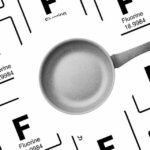Traditional Chinese Medicine: Product Licensing and Practices in Canada
By: Madelyn Martinez, REGULATORY SPECIALIST, email
Traditional medicine, as defined from the World Health Organization (WHO), is based on “the sum total of the knowledge, skill, and practices based on the theories, beliefs, and experiences indigenous to different cultures, whether explicable or not, used in the maintenance of health as well as in the prevention, diagnosis, improvement or treatment of physical and mental illness.” Chinese medicine is, therefore, a system of medicine based on centuries worth of growth, knowledge and experience; especially as trade between China and surrounding nations grew. Traditional Chinese Medicine (TCM) is sometimes commonly referred to as “herbal medicine” or “Chinese herbal medicine”, but one key factor is that many of the ingredients or substances used in this traditional practice of medicine are not of plant origin. Substances used also come from animal and mineral sources.
TCM in Canada
Chinese medicine was first introduced to Canada through Chinese immigration. Not only did Chinese immigrants help with economic growth through business development, agriculture and the building of the transcontinental railway, but they brought with them their unique culture and practices, including Traditional Chinese Medicine and Acupuncture. In fact, Acupuncture is one of the practices of TCM that has become very popular and accepted among Western medicine and is constantly being studied.
Since its introduction, respect and appreciation for TCM has grown in Canada. Several post-secondary institutions offer educational programs and training to those interested in pursuing more knowledge and/or a career in this sector. As alternative medicine options, like TCM, grew in popularity amongst the public and TCM practitioners and medical practices grew in number, the federal government decided it was important to oversee these traditional practices and treatments. Just as in China where TCM originates, Canada has regulatory standards in place to ensure the safety and efficacy of these products.
What does TCM treat?
Traditional Chinese Medicine is based upon the theory of Yin and Yang and their combined interaction is believed to be the summation of life energy, known as Qi. When the balance between Yin and Yang is disrupted, this is thought to lead to illness or disease. To regain health, the balance must be restored through a treatment plan that’s specific to the individual.
Chinese herbs have been recorded throughout Chinese history in various texts as having specific properties, either individually or in combination, for treating a variety of ailments. Some of these include:
- Indigestion/constipation/diarrhea
- Arthritis and Joint/Body pain
- Lung disease/disorders
- Menstrual cramps
- Headaches
- Heart disease
Through the NHP regulatory process, the Canadian public can be assured that the remedies on offer have been appropriately assessed to target the ailments and symptoms they wish to treat.
What are NHPs and how is Chinese medicine related?
Natural Health Products are defined by the Natural Health Products Regulations (NHPR) as substances designed to restore or maintain good health. Alongside cosmetics and non-prescription drugs, NHPs fall under what Health Canada has termed “self-care products”. Their purpose is to prevent or treat an illness or condition; however, they should not be taken or misrepresented as ‘cures’. NHPs do not cure diseases, rather they serve to reduce health risks and maintain good health via diagnosis, treatment, mitigation, and prevention of disease or disease symptoms that are experienced by humans. The development of these NHP regulations broadened the scope of products available on the Canadian market and provided the Canadian public access to products that are safe and can be used, at the consumer’s discretion, to treat ailments that do not require a physician’s prescription or intervention.
A variety of products fall under the natural health product category, including vitamin and mineral supplements, herbal supplements, topical pain relief products, sunscreen and toothpaste. Homeopathic and Traditional medicines, like Chinese medicine, also fall under the NHP category and are subsequently governed under the same principles.

Licensing Natural Health Products and Traditional Chinese Medicine NHPs
To sell an NHP in Canada, the responsible company must submit a product licence application to the NNHPD and be successful in obtaining a Natural Product Number (NPN) for their product. As an NHP, TCM products must undergo the same licensing process as those products making modern health claims, but there are some minor points to consider.
Similarities
For both TCM and non-TCM products, applicants must submit a complete dossier to the Natural and Non-prescription Health Products Directorate (NNHPD) for full assessment. Once the NNHPD completes their assessment of the safety and efficacy of the product in question, a product license may be issued.
Differences
“Traditional” vs “Modern Health” claims
- “Traditional claims”
- must be based upon the theories, experiences and beliefs embodying Traditional Chinese Medicine (TCM);
- should be supported by traditional evidence material not modern evidence (e.g. Chinese Herbal Medicine: Materia medica);
- cannot refer to or imply diseases listed on Schedule A of the Food and Drugs Act; and
- often include “Traditionally used in Chinse Medicine …” at the start of the claim to indicate what evidence is used to support the claim.
- “Modern claims”
- are supported by modern evidence such as randomized clinical studies;
- must be substantiated by rigorous scientific evidence demonstrating the product’s efficacy and safety; and
- are not applicable to TCM products.
Safety Data
Demonstrating a long history of safe use is important; a minimum span of at least two generations is considered “long”.
Efficacy Data
If pharmacopeial evidence is used to support efficacy, a minimum of two independent scientific evidence references is not required. Applicants can use a variety of resources to support the efficacy of their products, including a Chinese Materia Medica and Traditional Chinese Medicine Pharmacopoeia.
Note: Health Canada offers a unique checklist for applicant use to determine if traditional products fit the pharmacopeial stream. Reach out to our team to learn more about the checklist and whether it applies to your product.
What other considerations must be made for TCM product licensing?
- Site licensing: As is required for all Natural Health Products, all TCM products must be manufactured, packaged, labelled and imported by a Health Canada site licensed facility/company. A designated quality assurance person must review the finished product specifications and all other relevant documentation to approve the product before it is made available for distribution. If manufactured in Canada, the Canadian site must have the appropriate site license allowing them to perform the relevant activities (manufacturing/packaging/labelling). If a product is made outside of Canada, the responsible company in Canada, known as the “importer” will apply for the activity of importation. We have Regulatory Specialists on our team who specialize in NHP site licences and can assist you with the rigorous application.
- Testing: Like all other NHPs, TCM licensed products must also undergo finished product testing and meet regulatory testing standards to be considered safe for sale and use. Since herbs are the predominant ingredients in TCM products, testing for pesticides and presence of heavy metals is key.

Our team of regulatory experts is dedicated to streamlining the licensing process, helping you get your products to market faster. With our extensive regulatory knowledge, you can focus less on understanding the requirements and more on growing your business and boosting sales. Contact us today to discover how our team can benefit and support you!
Dell Tech has provided professional, confidential consulting services to the specialty chemical
industry in Canada, the USA, Europe, and Asia for the last 40 years.





